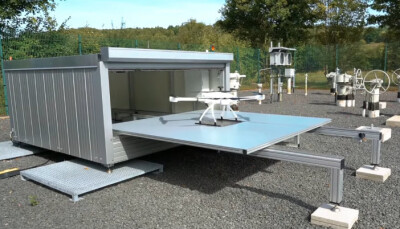For this week’s round-up of commercial drone industry news, we look at a new drone dock for emergency response, how some farmers are choosing drones over airplanes for crop dusting, and drone-based efforts to protect critical assets in Africa.
New Drone Dock for Emergency Response
According to a report in Dronelife, Gale Project Technologies plans to launch “a remote monitoring, early-alert, sUAS-agnostic dock” aimed at emergency response missions. Called the GALE System, the dock will offer “real-time situational awareness and rapid drone deployment without the need for on-site human intervention, positioning it as a vital tool for fire and rescue, police, environmental monitoring, infrastructure security, and national security sectors.” The Dronelife article explains that the GALE System will provide “a modular, feature-rich platform at a more accessible cost” than its competitors, and its open-source architecture will enable “agencies to integrate existing equipment without vendor lock-in.” GALE aims to launch the dock early 2026.
Will Drones Replace Crop Dusters?
From KUNC in Colorado comes an intriguing discussion on the use of drones in agriculture, specifically how drones may—or may not—replace traditional aircraft for crop dusting applications. According the story, agriculture industry leaders are reporting that “many crop duster pilots are retiring, and younger pilots are not hopping into the cockpit.” To pick up the slack, many farmers are turning to UAVs. Despite some cost and capacity issues, many farmers see drones as providing a viable alternative to conventional crop-dusting methods, and some farmers report increased adoption of uncrewed systems.
Drone Startup Protects Critical Assets in Africa
“Attacks on Africa’s critical infrastructure are not uncommon,” CNN reports, and Nigeria-based startup Terra Industries is engaged in building systems to “detect and monitor potential threats.” Specifically, the company “is building autonomous security systems powered by artificial intelligence and drones that can detect threats and help protect the continent’s critical industries such as energy, mining, telecoms and agriculture.” For the effort, the company has built Africa’s largest drone factory—a 15,000-square-foot (1,394-square-meter) space on the outskirts of Abuja—that can build 30,000 drones a year, including “long-range drones built for surveillance missions, quadcopters for first response and data collection, and small self-driving vehicles for ground surveillance.”















Comments